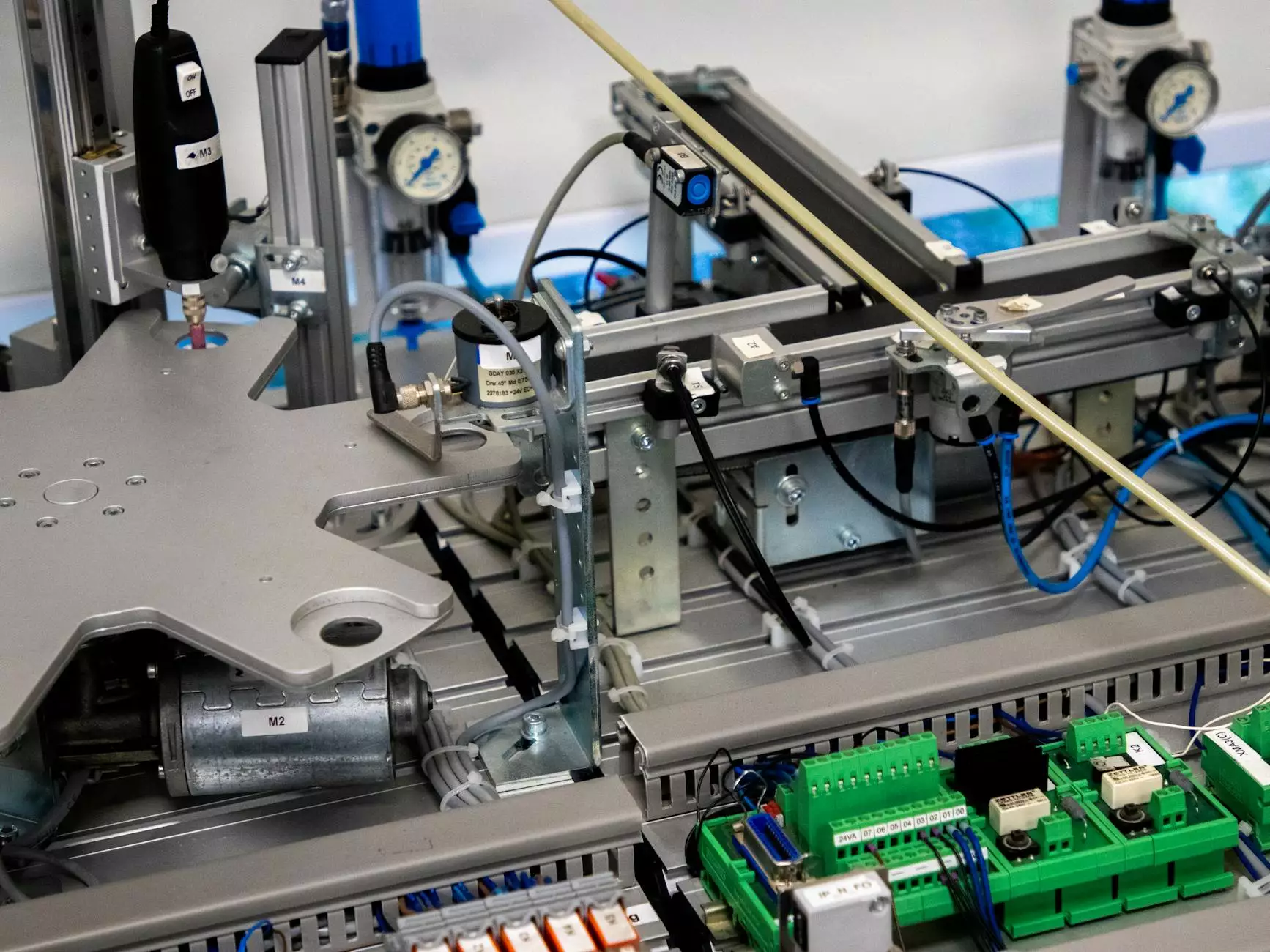Understanding the Transmission Pressure Sensor Switch

The transmission pressure sensor switch is a vital component within modern automotive transmission systems. It offers essential functions that help optimize vehicle performance, ensure durability of the transmission, and guarantee a smooth driving experience. This article delves into the significance, working principles, and benefits of the transmission pressure sensor switch, providing valuable insights for automotive enthusiasts and professionals alike.
What is a Transmission Pressure Sensor Switch?
A transmission pressure sensor switch monitors the hydraulic fluid pressure within an automobile's transmission system. By providing real-time measurements, the sensor allows the vehicle's computer system to make informed decisions regarding the operation of the transmission. This component plays a crucial role in ensuring that the transmission functions effectively and efficiently.
How Does the Transmission Pressure Sensor Switch Work?
The operation of a transmission pressure sensor switch is straightforward yet essential. When the hydraulic fluid circulates within the transmission, it creates pressure that reflects the system's condition and performance. Here’s how the process works:
- Fluid Circulation: The hydraulic fluid is pumped through the transmission system, creating pressure.
- Pressure Measurement: The transmission pressure sensor switch detects the pressure level of the hydraulic fluid.
- Signal Transmission: The sensor relays pressure data to the vehicle’s engine control unit (ECU).
- Adaptive System Response: The ECU adjusts transmission parameters, such as shift points and fluid flow, based on the pressure readings.
Types of Transmission Pressure Sensor Switches
There are primarily two types of transmission pressure sensor switches used in automotive systems:
- Analog Pressure Sensors: These sensors provide continuous pressure readings that vary with the pressure in the transmission. They are often used in high-performance applications where precise measurements are crucial.
- Digital Pressure Sensors: These sensors output a digital signal that corresponds to specific pressure levels, allowing for easier integration with modern electronic control systems.
Importance of the Transmission Pressure Sensor Switch
The transmission pressure sensor switch is indispensable for several reasons:
- Performance Optimization: By continuously monitoring the pressure, the switch allows the ECU to optimize shift timing and fluid flow, enhancing vehicle performance and fuel efficiency.
- Smooth Shifting: Proper pressure readings lead to smoother gear shifts, contributing to a comfortable driving experience.
- Prevention of Damage: The sensor helps prevent transmission overheating and potential failure by ensuring that the pressure remains within safe operational limits.
- DTC Monitoring: The transmission pressure sensor switch can trigger Diagnostic Trouble Codes (DTCs) when it detects abnormal pressure levels, aiding mechanics in pinpointing issues quickly.
Signs of a Failing Transmission Pressure Sensor Switch
Recognizing the signs of a failing transmission pressure sensor switch is crucial for timely maintenance and repairs. Here are some common symptoms:
- Unusual Shifting Behavior: Hesitation or erratic changes in gears may indicate pressure issues.
- Check Engine Light: A illuminated warning on the dashboard may signal sensor malfunction.
- Slipping Gears: If the transmission appears to slip, it might be due to inaccurate pressure readings.
- Fluid Leaks: Signs of a powertrain fluid leak could suggest sensor or transmission damage.
Benefits of Replacing a Faulty Transmission Pressure Sensor Switch
Timely replacement of a faulty transmission pressure sensor switch can lead to numerous benefits:
- Improved Vehicle Dependability: A well-functioning sensor contributes to the overall reliability of the vehicle.
- Enhanced Fuel Efficiency: Accurate pressure reading aids in optimizing fuel consumption.
- Reduced Repair Costs: Early detection and replacement of sensor issues can prevent more expensive transmission repairs.
- Smoother Driving Experience: Restore the comfort of seamless gear shifts and reliable vehicle performance.
How to Choose the Right Transmission Pressure Sensor Switch?
Selecting the correct transmission pressure sensor switch for your vehicle involves considering several key factors:
- Compatibility: Ensure the sensor is compatible with your vehicle's make and model.
- Quality and Performance: Opt for high-quality sensors from reputable brands to ensure reliable performance.
- Warranty: Look for products that come with a warranty, indicating the manufacturer's confidence in their quality.
- Price: Compare prices across different suppliers, including trusted online retailers like Shenghai Auto Parts.
Installation Process of a Transmission Pressure Sensor Switch
Replacing a transmission pressure sensor switch may seem daunting, but with the right tools and knowledge, it can be a straightforward process. Here's a step-by-step guide:
- Gather Tools: Prepare necessary tools such as wrenches, screwdrivers, and a replacement sensor.
- Safety First: Disconnect the vehicle's battery to avoid electrical shorts.
- Locate the Sensor: Identify the location of the transmission pressure sensor switch, typically on the transmission body.
- Remove the Old Sensor: Carefully unscrew and disconnect the old sensor from the wiring harness.
- Install the New Sensor: Connect and secure the new sensor in place, ensuring a tight fit.
- Reconnect the Battery: Once everything is in place, reconnect the battery and check for any leaks or issues.
Conclusion
In conclusion, the transmission pressure sensor switch is a critical component that significantly influences a vehicle's overall performance and reliability. Its role in monitoring hydraulic pressure ensures that the transmission operates smoothly, enhancing driving experiences and ultimately prolonging the life of the vehicle. By ensuring proper maintenance and timely replacement of this sensor, vehicle owners can enjoy improved fuel efficiency and avoid costly repairs.
For high-quality auto parts, including transmission pressure sensor switches, visit Shenghai Auto Parts, your trusted source in the automotive industry.









